|
Today, sports sedans are
common sights on the road. Since the success of BMW M5, all premium car
makers must have at least one or two high-performance versions of their
production sedans. Half a century ago, the automotive world was very
different. High performance was considered to be an exclusive right to
sports cars and grand tourers. 4-door sedans could only concentrate on
offering comfort and luxury.
Jaguar broke this tradition in 1959 with its MkII sedan, which was capable of 125 mph and 0-60 in 8.5 seconds, very good performance then. However, in the next 2 decades few tried to develop further in this direction. The only exceptions were Maserati Quattroporte and two special editions of Mercedes-Benz S-class, 300SEL 6.3 and 450SEL 6.9. As we had already talked about the Maserati, now let us turn to the fast Mercedes. 300SEL
6.3 (1968)
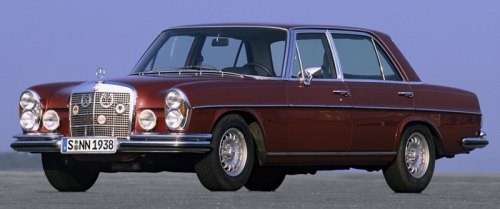 Conversion from the regular W109 300SEL to 6.3 was pretty straightforward: transplanted the M100 6.3-liter V8 from the 600 series limousine, reinforced the chassis, fitted ventilated disc brakes and wider high-speed tires. It retained the self-leveling air suspensions of 300SEL for the benefit of ride and high-speed stability. The V8 produced 250 horsepower (DIN net) and an astonishing 369 pound-foot of torque, making the Mercedes like American muscle cars. The factory claimed 0-62 mph (100km/h) in merely 6.5 seconds, which was difficult to repeat as its 205/70VR14 rubbers struggled to translate the huge torque into motion. 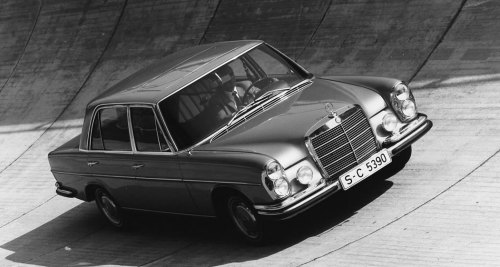 Production ran for 5 years from 1968, during which more than 6500 cars were sold. 300SEL 6.3 was therefore an unexpected success. Originally, it was only a pet project of an engineer working in its racing division. Management saw the prototype performed so well and approved for production. In 1971, AMG converted it to race car and got second place in Spa 24 hours, an amazing result considering its heavyweight iron-block V8 must be a nightmare to tame. 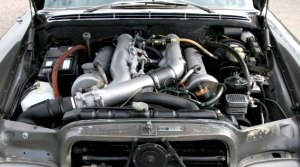 450SEL
6.9 (1975)
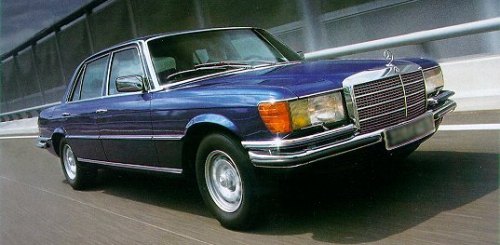 Like the regular 450SEL, transmission switched to the new Mercedes 3-speed automatic with torque converter. It seemed to be a counter-progress, but with so much torque there was hardly any needs for more gears. Moreover, the new tranny seemed to be smoother and no less responsive than the old 4-speed unit with fluid coupler, so motoring journalists were delighted with it. Compared with the old car, the final drive ratio was lowered from 2.85:1 to 2.65:1, biasing towards top speed and cruising refinement. Thanks to higher power, revised gearing ratio and a lower drag body, the 6.9 was found to be capable of topping 145 mph by Auto Motor und Sport magazine. This put it at the top of performance sedan chart again. However, the W116-based machine gained nearly 200 kg on its kerb weight due to its larger bodyshell, improved safety, extra comfort features and new suspensions, so it took slightly longer time to accelerate from 0-60. The most commonly quoted figure is 7.4 seconds. Still, the fast Mercedes was faster than other high-performance 4-door sedans in the late 1970s, such as Aston Martin Lagonda and Maserati Quattroporte. 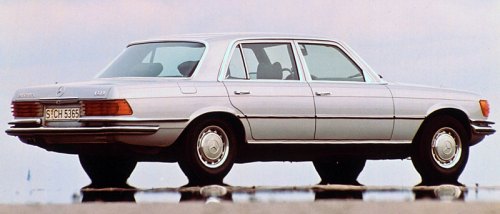 Following the demise of W116, Mercedes stopped producing high-performance sedans for a while. In the 1990s, it switched focus to the mid-size E-class, producing 500E (by Porsche), E50 AMG, E55 AMG... High-performance edition would return to S-class in the new millennium with S55 AMG and S65 AMG. By the time they were no longer as exclusive in the market as 300SEL 6.3 and 450SEL 6.9. |